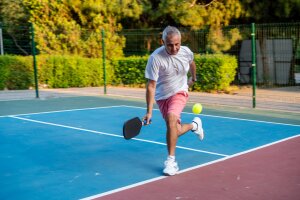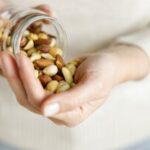Pickleball, a sport that combines elements from badminton, tennis, and table tennis, has experienced a significant surge in popularity across the United States, with participation rates increasing by 159% over the last three years according to the Sports and Fitness Industry Association. This sport, accessible to players of various ages, requires basic equipment including pickleball paddles, balls, and a court. It is praised for its engaging nature and the opportunity it offers for players to meet physical activity guidelines recommended by health authorities.
The American Council on Exercise conducted research in 2018 which highlighted pickleball’s potential benefits for middle-aged and older adults. The study found that playing pickleball can contribute to meeting the Centers for Disease Control and Prevention’s recommended 150 minutes of moderate-intensity physical activity per week. Participants in the study burned an average of 350 calories per hour of play, indicating that regular engagement in pickleball can support cardiorespiratory fitness.
Beyond physical health, playing pickleball also offers mental health benefits. Research has shown improvements in personal well-being, life satisfaction, and reduced levels of depression, stress, and enhanced happiness among players. The social aspect of the sport, along with the physical activity, contributes to these positive outcomes.
However, the growth of pickleball has raised concerns regarding the risk of injuries, particularly among the sport’s largest demographic, those aged 55 and older. Medical costs associated with pickleball injuries are estimated to be significant, with injuries most commonly affecting the wrist, lower leg, head, and lower trunk. Proper technique and a fitness regimen tailored to the sport’s demands are essential for safe participation.
An exercise program designed specifically for pickleball can help prevent injuries. This program should include a warm-up, conditioning exercises, and a cool-down, focusing on movements that enhance postural stability, joint mobility, and proper movement patterns. The warm-up exercises, such as standing gate openers and lateral over-unders, prepare the body for play. The conditioning segment includes exercises like side lunges and push-ups with single-leg raises, aiming to build strength and endurance. Finally, the cool-down helps to stretch and relax the muscles after the game, incorporating movements like the standing triangle straddle bends and cat-cow stretches.
Incorporating pickleball into one’s lifestyle not only aligns with physical activity guidelines but also promotes mental well-being and social interaction, making it a comprehensive fitness activity. With appropriate precautions and preparation, individuals can enjoy the benefits of pickleball while minimizing the risk of injury.










